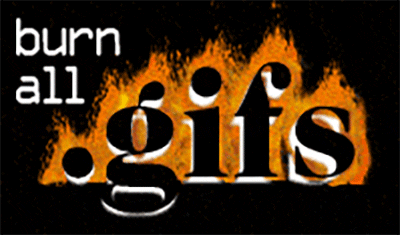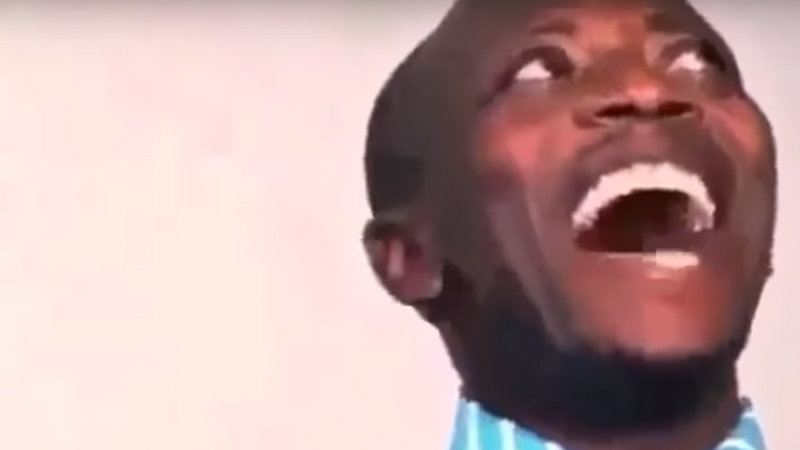My research is an investigation and re-appropriation of Heideggerian philosophy for critical race and new media theory. I am thinking about the simultaneous violences and potential healings of the .gif file format as an ongoing (re)production of bodies, gestures/performances, and affect. Thus far I have been focusing on the image format itself, and allowing its histories and aesthetics to bleed into my initial thesis (that reaction .gifs are a site where race (particularly blackness) is fragmented into a standing-reserve of black performance, affects, and images).
It’s a long story, but in true .gif spirit, I will attempt to compress it into a few very small, very interesting, paragraphs without leaving out any of the details. Basically, the Graphics Interchange Format (GIF) died in 1999, and came back to life 5 years later.
Born in 1987, the .gif served as the primary image file for the then-young internet. It was radical because it was portable, compressing large amounts of data into small file sizes so that it could slip and slide through cyberspace, shared and re-shared, uploaded and downloaded quickly and easily. Tactile, passed from website to website, user to user.
New patent claims in 1994 (over the .gif’s file compression algorithm, Lempel-Ziv-Welch, LZW) however, resulted in its fall from grace. Now that it was policed, no longer engaged in its promiscuous slipping and sliding through space, the .gif became all but defunct. On November 5, 1995, activists planned (only half-jokingly) a Burn All GIFs day – to actually light floppy disks full of .gifs on fire outside the patent-holder’s offices.

The .gif burned at the digital stake of their website (burnallgifs.org [Linked on Internet Archive]), focused on building a replacement image format called Portable Network Graphics (PNG), but it was incomplete and imperfect. So when in 2004 its patents expired, the .gif came back to life to serve the function for which it couldn’t be replaced: animation.
The animated .gif that is so much a staple of internet culture today, then, is a type of haunting, a stuttering afterlife that emerges from a history of contested patents/ownership and boycotts as an unowned (unownable?) digital object. Through its death and subsequent rebirth in animated form, the .gif arrives at the present moment as a slightly damaged but functioning relic from the past. It embodies its resurrection as a re-animation.

And it is in this space where the .gif has emerged as a damaged digital object on the precipice of past and future that I am thinking. Here, the .gif bears the traces of a death, is simultaneously an artifact of the past and a production of the present; it doesn’t follow the laws of temporal progression and instead loops a given moment ad infinitum, enacting a new temporality of the present that threatens to fall both into the past (by way of its status as relic) and the future.
It is this latter condition of falling into the future, the anticipatory condition of the .gif, that Fred Moten writes about in his essay, ‘Black Mo’nin’.’ While his object of inquiry is a certain kind of affectively charged photograph, his claim that “here is an abundance – in abundance – of the present” resonates with the condition of the .gif that repeats a present moment, holds the viewer in a single moment beyond that moment, carries that present moment beyond itself into the future.
Thus, the historical resurrection (re-animation) of the .gif, its ties to the past, affects its literal animation, its ties to a present beyond itself: a present-towards-the-future.
Moten, Fred. “Black Mo’nin’.” Loss: the Politics of Mourning, by David L. Eng, University of California Press, 2008, pp. 59–76.

Your review of .gif file history and its re-animation is poetically framed and lovely to read.
I appreciate your insight into the .gif’s ability to repeat a moment and hold a viewer there. Thus far, I am feeling some strong Media Theory vibes coming from this project.
I look forward to seeing how these insights about temporality and presentness are integrated with your theories about black performance. It seems like it’s going to be great!
Thank you v much~ I’m working on synthesis rn